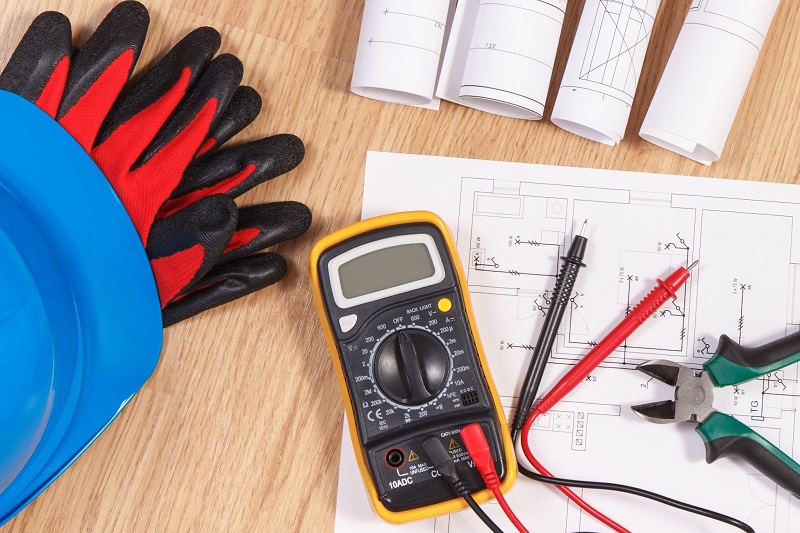If you’ve been in a situation where OSHA is coming to your business, and you have no idea what the specific OSHA electrical safety requirements they will question you on – you’re not alone.
OSHA has strict regulations about electrical safety that every company needs to follow due to the danger involved. Because of these recognized hazards, strict OSHA regulations have been put in place to protect employees. Not complying can set you back thousands of dollars in fines.
You might think you’re prepared for when the inspectors and compliance officers arrive because you are pretty sure you’re doing everything right. But, think about whether you truly understand the safety measures in place and why. And more importantly, the implications of not doing everything right.
To find out whether you’re in for a hefty fine or if you’re in the clear, we’ve put together the compliance guide on OSHA electrical safety requirements.

What Type of Personal Protective Equipment Should My Workers Have?
The first requirement is personal protective equipment (PPE).
PPE is not one size fits all. The appropriate PPE for employees to work safely and without risk of serious injury is completely context-specific.
To establish the appropriate PPE for electrical safety, you will need to perform the following procedures:
- electrical safety analysis;
- arc flash hazard analysis
- flash protection boundaries analysis; and
- identify other potential electrical hazards.
These procedures will indicate what PPE is best suited for those situations, should they occur.
Also, an OSHA inspector could ask you to confirm whether you have done so and when. They could ask you to describe the circuit or the electrical equipment at the job location. If you can’t do this from memory, it’s easily assumed that you haven’t adequately assessed the facility for electrical hazards.
Can Equipment Be Energized When Working on It?
One of the most well-known of OSHA’s electrical standards is the requirement to not work on live circuits unless absolutely necessary.
OSHA standard 1910.333(a)(1) states: “Live parts to which an employee may be exposed shall be de-energized before the employee works on or near them unless the employer can demonstrate that de-energizing introduces additional or increased hazards or is infeasible due to equipment design or operational limitations.”
If you are working on live equipment 50 volts and higher, you must first perform an electrical hazard analysis.
Once you have done so, you will be required to provide an adequate response as to why you have to work on live circuits and the electrical safety standards and measures you have implemented as a result.

What Other Requirements Are There To Ensure Occupational Safety?
The whole point of electrical protective equipment is to promote electrical safety and keep employees safe from injury should something happen.
It’s your responsibility to use the information from your analyses to identify potential electrical safety hazards before they can be dangerous and handle them appropriately.
According to OSHA regulations, if a serious workplace hazard can’t be fixed, you must use signs to make workers aware of its danger.
Safety signs using safety symbols can be used to promote occupational safety. They should indicate a workplace hazard, and employees should know how to react to it. For example, is the sign telling them not to enter or to wear particular equipment?
Physical barricades can be used to limit or prohibit access. This could be because of uninsulated energized conductors or electrical circuit parts. In the event of a serious workplace hazard, an attendant should be stationed at the hazard site to warn and protect employees of potential danger.
Are My Workers Correctly Qualified To Handle the Respective Electrical Equipment?
Experience means nothing without qualification and training.
When it comes to large scale electrical equipment and the significant risks involved, it boils down to qualification or nothing – it’s not worth the risk.
But, remember that the occupational safety and health of unqualified employees is important, too.
As their employer, it’s your responsibility that every staff member who sets foot on your premises, from cleaners to painters to the top management staff, can identify electrical hazards and be trained on how to respond to them.
How Insure Compliance Can Help
We perform a safety gap analysis to establish which safety gaps in your company need to be addressed. Any weak links result in a weak safety culture.
Our unique Safety Gap Model focuses on the:
- awareness gap,
- process gap,
- knowledge gap,
- verification gap, and
- accountability gap.
The quickest, easiest and most efficient way to train your employees is to use the help of a professional.
Once all the safety gaps are addressed, your business risk reduces significantly.
We distinguish any other workplace-specific safety practices that need to be implemented that aren’t covered, and provide training for qualified and unqualified staff about voltages, electric current, arcing, grounding and lack of grounding.
After our training, employees will be able to identify exposed live parts from other parts of electrical equipment and determine the nominal voltage of live parts.

What Happens if I Don't Meet the OSHA Electrical Safety Requirements?
If you don’t meet the OSHA Electrical safety requirements in the workplace, you are putting the lives of your employees in jeopardy, and you can receive one or more monetary fines.
Non-serious and serious violations can incur charges of up to $7,000. Repeat violations are the same cost. Failure to abate can also result in up to $7,000 per day.
Key Takeaways
There are many OSHA electrical safety requirements, and it can all become a bit overwhelming at times.
Therefore, it’s your responsibility to perform the appropriate analyses to establish the correct PPE needed by your workers and ensure they receive it.
If your staff are working on live equipment 50 volts and higher, an electrical hazard analysis is required. If working on live equipment is unavoidable, proof of electrical safety standards and measures you have implemented must be available.
Where necessary, safety signs and physical barriers should be used to demarcate hazards.
Training of staff is crucial, to avoid having to pay a hefty fine, never mind one of your employees suffering a heinous injury due to your negligence.
If your business requires support in ensuring you’re compliant with OSHA For all electrical safety requirements, get in touch with us to find out how we can help you.
Disclaimer:
Please note that every effort has been made to ensure that the information provided in this guide is accurate. You should note, however, that the information is intended as a guide only, providing an overview of general information available to businesses. This guide is not intended to be an exhaustive source of information and should not be seen to constitute legal, safety or business advice. You should, where necessary, seek your own advice for any issues raised in your affairs.








2 Responses
Thanks for the useful information.
I Purchased Signs from Safety Sign Direct quality is really good at a very affordable price.
You can also checkout and get the signs for you.